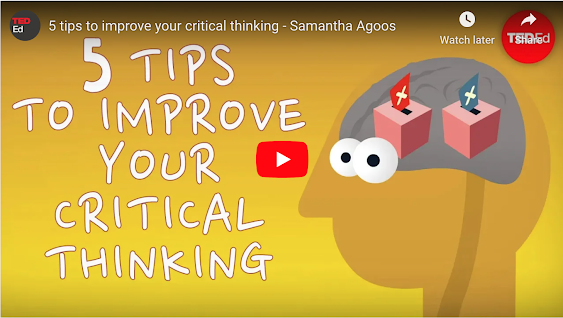Critical thinking is an important skill for the 21st century students. Not that it was not important before but in a digitally focused world where there is an exceeding surplus of amateurish knowledge and disinformation, the ability to critically assess and evaluate information has been elevated to the rank of survival skills.
Critical thinking allows students to navigate the piles of information found on the net, assess sources, and make informed decisions as to what is relevant and what is not.
Critical thinking, as I have argued in previous posts here in Educational Technology and Mobile Learning, is not about a single skill but a compendium of interrelated skills and cognitive competencies that include synthesizing, assessing, analyzing, applying and evaluating.
And because meaning is layered and often what is hidden between the lines is just as important if not more important than what is manifestly declared, critical thinking empowers students with the analytic tools to deconstruct the different layers of meanings and uncover what is silenced.
Critical thinking is, therefore, a mindset, one that is steeped in a culture of questioning and investigation. Critical thinkers are inquisitive learners who rely on the power of questions to explore the depths of alternative meanings. I have already covered examples of critical thinking questions to use with students.
However, the purpose of my post today is to share with you this interesting TED Ed lesson explaining what critical thinking is all about. Besides introducing students to the concept of critical thinking, this video lesson also features 5 main tips on how to improve one’s critical thinking abilities namely:
- Formulate your questions
- Gather your information
- Apply the information
- Consider the implications
- Explore other points of view
Check out the video lesson to learn more about each of these features. For more video resources on critical thinking, check out 10 great TED Ed lessons on critical thinking for students.
Click on the image below to watch the video lesson in TED Ed website.


